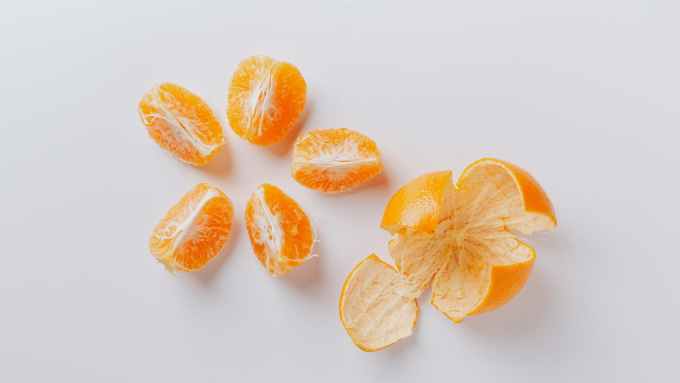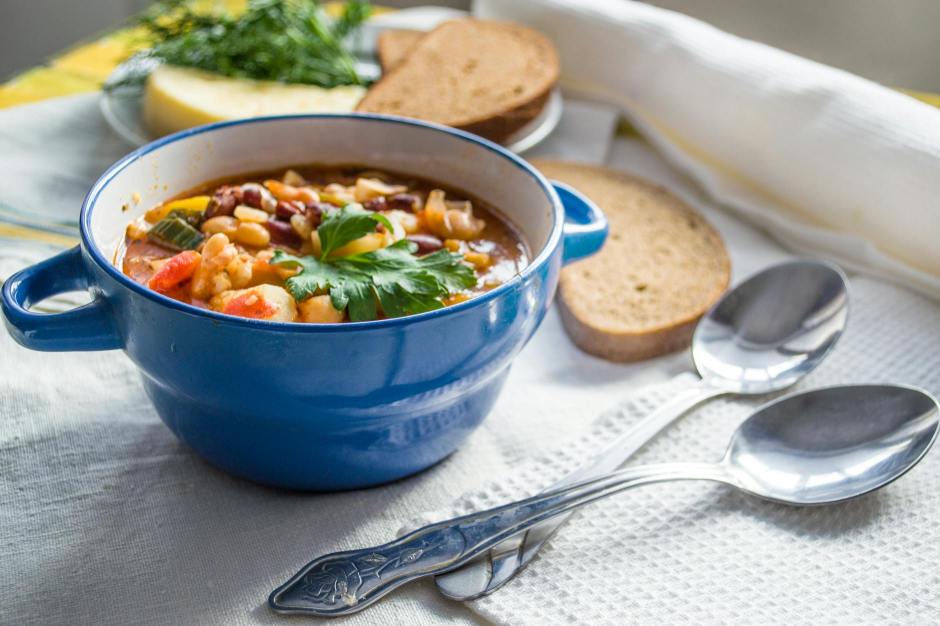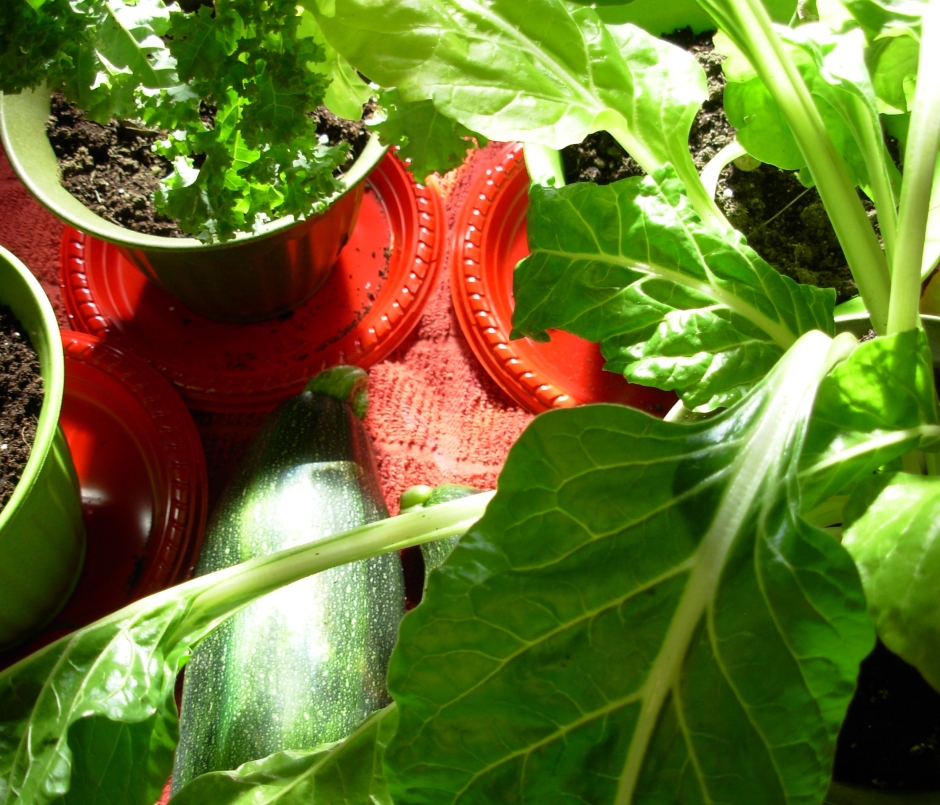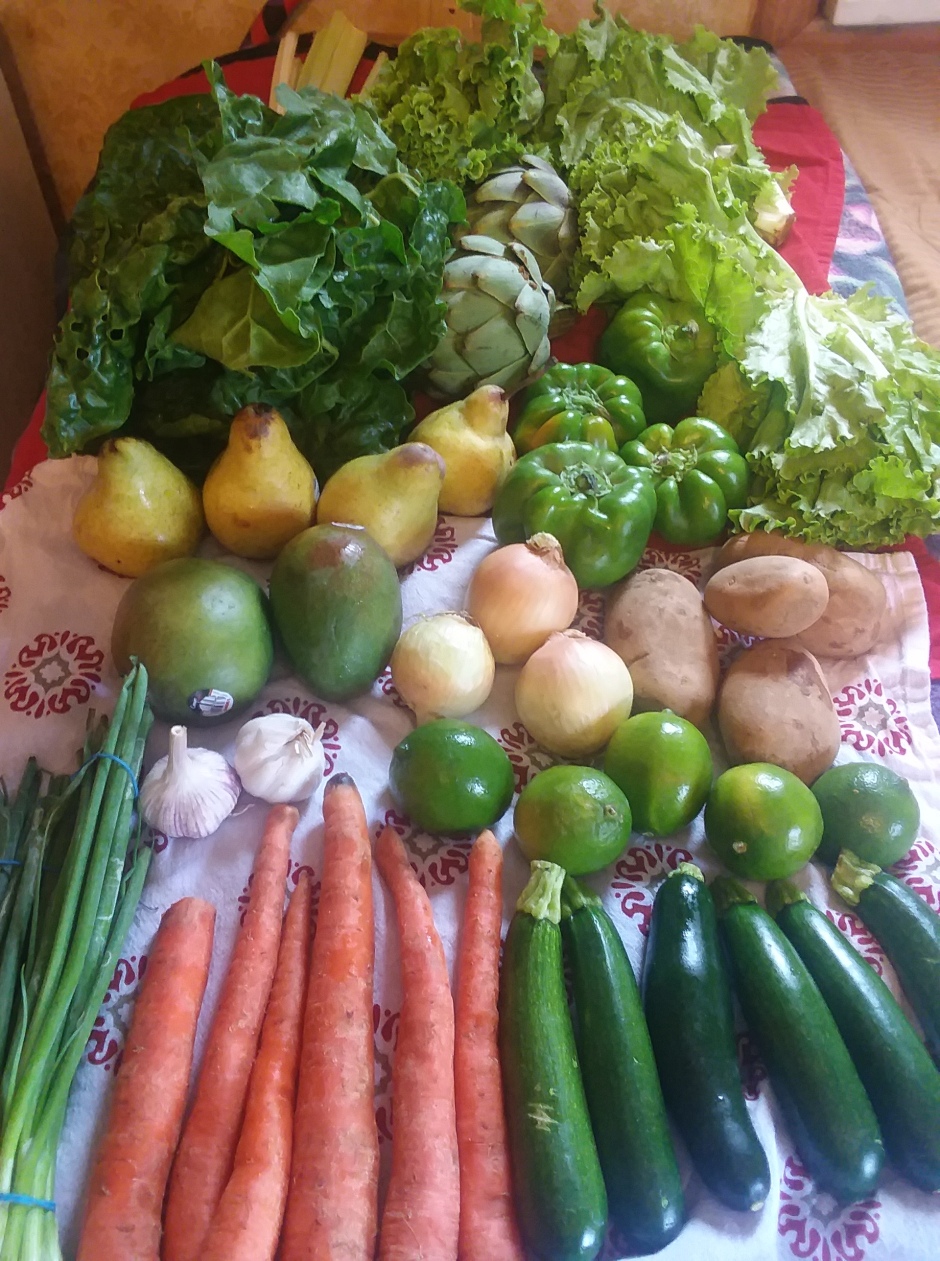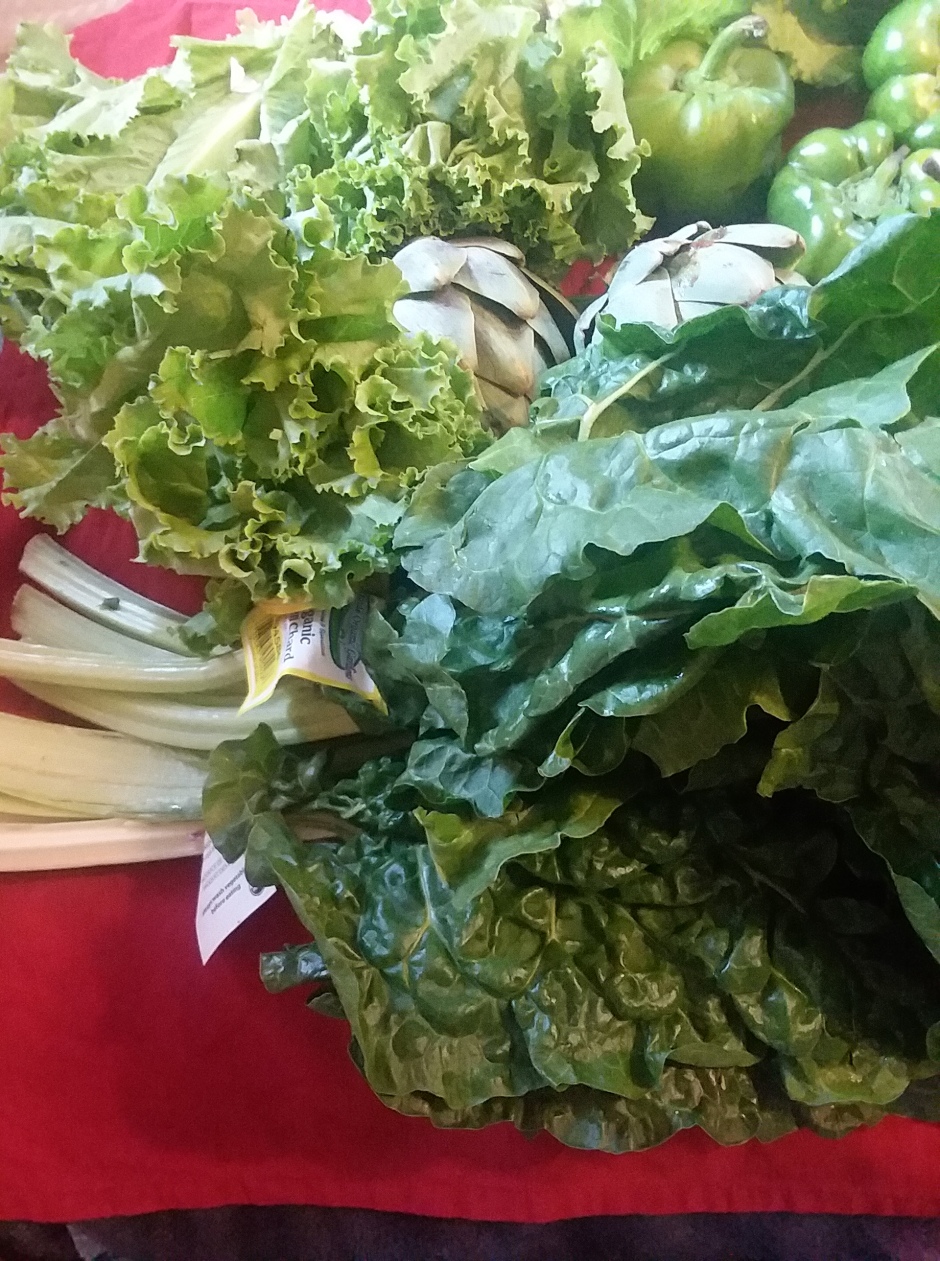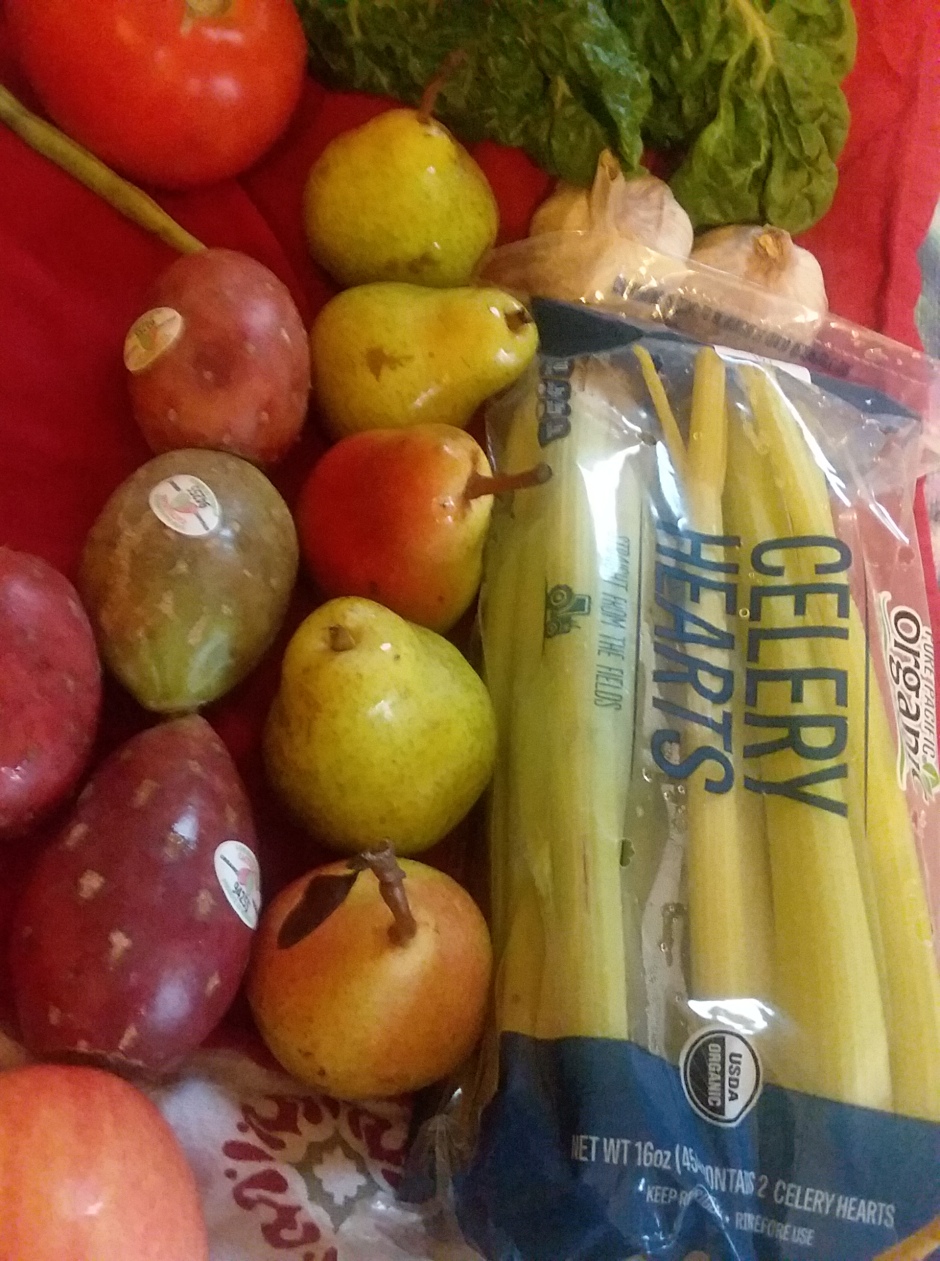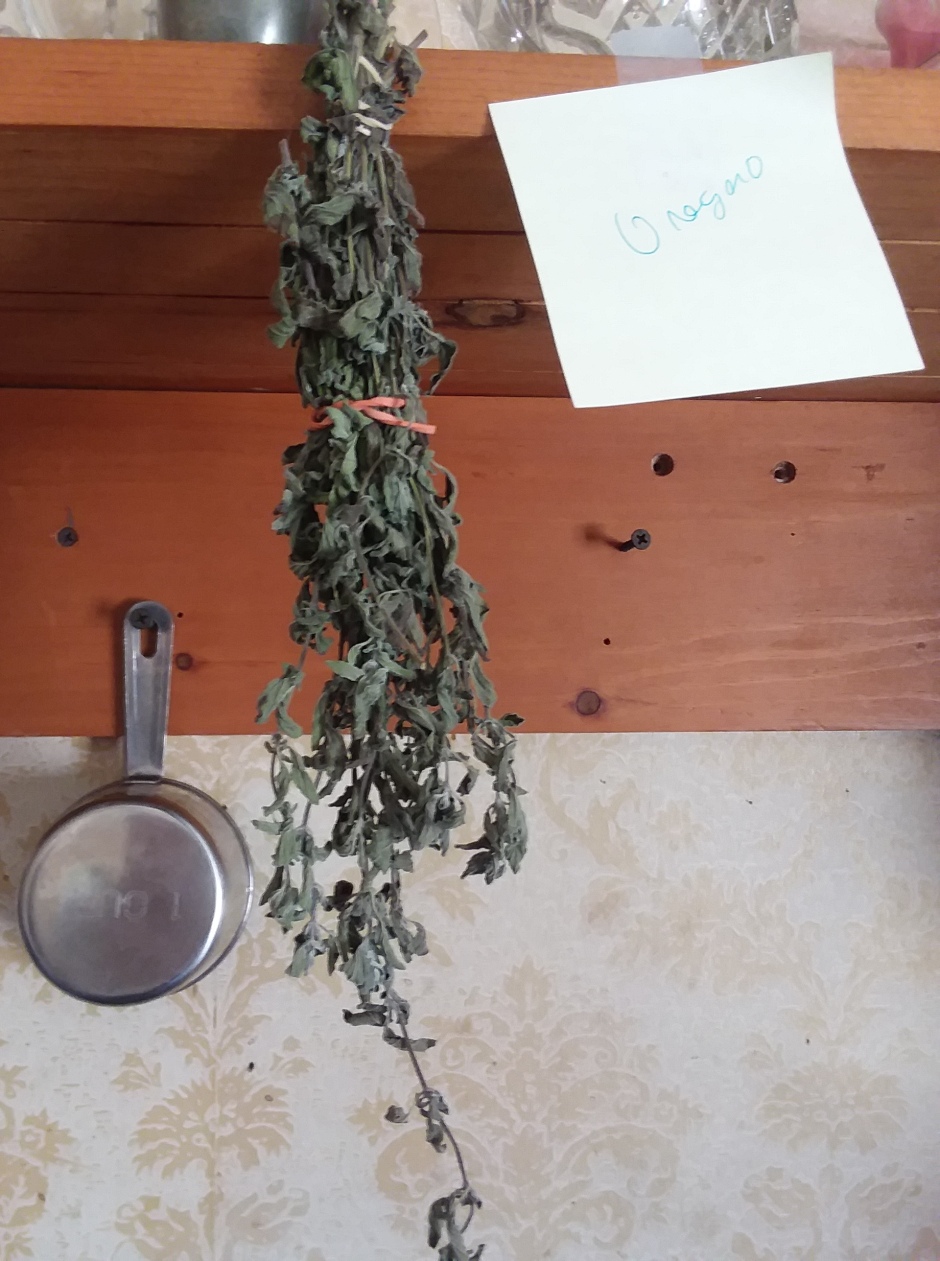I have diabetes. For the most part I have it under control. If I’m not careful, though, I can drive up my sugar and it can take time to get a handle on it again.… More
5 Ways to Spend Less on Food
It seems like every time I turn around my grocery bill is going up and I am left trying to figure out how to bring it back down. It’s mighty stressful sometimes. I don’t know about you, but I am tired of having to continuously do this. It seems that something else has gone up in price every couple of weeks or so and I have to readjust. Sometimes more than just one item.
Because I rent a room in a house, I do not have a lot of storage space for food. I also only have a dorm size refrigerator with a small freezer, so I am not able to take advantage of sales like so many others can. I only have a small corner of my room where I get have a “kitchen”. I have decided that in order to save money in the long run, I will have to spend a little money now.
I was given a bonus at work after the holidays that allowed me to buy a shelving unit for my “kitchen” corner. I also want to buy a dorm fridge stand with a couple of drawers, and another type of shelving unit for the other wall in that corner. I am hoping for deals. My tax refund should cover those costs and a little bit of a stock up on food.
One of my problems is that I have diabetes, so I have to be careful how I eat. I intend not to have to stay on the medication, so I do have to eat a mainly healthy diet. Healthy for me isn’t the same as healthy for most people I know, and it is far more costly. This means that I really do need to be able to take advantage of good deals when I can find them, and there are some things I want to be able to buy in larger quantities in order to save a few dollars here and there. Things I use often. I need a place to store these items in an organized manner.
I don’t have a stove. I have a two-burner hotplate, two three-quart crockpots, decent size toaster oven, and a blender. These are my means for making meals. So, I would like my second shelving unit to be a baker’s rack so I can have a counter and I want one with the power strip so I can plug those appliances in easily.
Because of the limitations of money and space, I have been cutting back more and more. I thought I would share with you a few of the things I have been doing so far this year to save money.
5 Ways I Spend Less on Food:
I am purposefully buying “cheep” fruits and veg each week. Cucumbers are often .79, and oranges .88. I buy the biggest ones I can find so I can get as much out of them as I can. If the cucumber is big enough, I can split it up between my four work shifts and have some for a weekend meal. Organic celery is less than $3 and will last at least a week. I pay attention to what the most affordable produce is each week and make do. This means I am often eating the same produce week after week. Because of the diabetes, I don’t get to eat potatoes and squash often, so I don’t have the option to save on those items when they are available at good deals.
I am saving bits and pieces in my small freezer. Celery tops and leaves, leftover bits of fruits and veg, a handful of nuts. It can all go into my super healthy smoothies. Leftover bits of meats, corn, peas, and diced tomato can go into a casserole, or even a soup if I have leftover broth frozen as well. I create two or three meals a month using mainly stuff I have leftover and placed in the freezer. A couple of weeks back, using leftovers and things I already had on hand, I made a chili that lasted me four meals at work, one on the weekend, and allowed me to freeze three meals for later. I didn’t even have to spend anything for that recipe.
I am being more intentional about not wasting food, thinking ahead to how I will use the entirety of each item and meal. How many work meals can I get out of this? How many weekend meals? Will I be able to freeze a meal or two. I am going through my refrigerator more often, deciding if anything needs to be used up each week, or placed in the freezer until I am able to use it up. I am going through my freezer most weeks, deciding if I can use anything up, and looking on my food shelf to see what needs to be used up right away.
I am saving vegetable ends, garlic peels, and other “throw away” items in a freezer bag to make a broth with later on. I haven’t decided if it will be chicken or beef broth, but I will check the cost of each when it is time to buy and decide how many meals I think I can get out of the bird or the roast for what price per meal. I will create a plan to use every bit of the meat, save for what little might be left on the bone to further nourish the broth.
I am stretching recipes by adding extra ingredients. For instance, I made a stroganoff a few weeks back. It was a pretty basic recipe without any vegetables. I, however, had some vegetables in the freezer that had been left over from previous recipes that I’d followed exactly, so I added these items to my stroganoff. This helped me to use up some odds and ends, free up a little space in my freezer, and get another meal out of that stroganoff that I put in the freezer for later use. I did much the same with that chili I mentioned earlier and ended up with three more meals than I normally do with that recipe.
*****
I am curious as to how you are saving money on food these days. Have you had to take extra steps to stretch your grocery money? I’d love to hear from you.
~ Shannon
Apple-Maple Syrup
I’ve decided to experiment with syrups. I’m trying not to eat the typical syrups found at the store, preferring to use maple. A guest at the inn brought me fresh maple syrup last spring, made by a friend of his here in Maine. I put it away for winter, because that’s when I usually eat hot breakfasts. I took the syrup out the other day to go with pancakes, and decided to kick it up a notch.
Ingredients
1 medium apple, cored, peeled, and diced (reserve the apple peels for a smoothie)
water
enough syrup to cover the diced apple after cooking down in the saucepan
- Place the diced apple in a saucepan.
- Pour enough water in the pan to just cover the apples, and cook over medium-high heat until the apples are cooked down somewhat. You want them soft, and a little saucy. But you also want some chunks.
- Add water to cover again, once or twice more, as the water boils down and the apples get softer.
- Pour maple syrup over apples, to just cover.
- Heat until syrup is warmed.
Notes
- Try different types of fruits, such as peaches or pears.
Serving Suggestions
- Serve over pancakes, with fruit water.
Shannon
5 Laws of Being a Frugal Kitchen Goddess
Being a Kitchen Goddess is one thing. Being a Frugal Kitchen Goddess is something else. I’m a Frugal Kitchen Goddess, and darn proud of it. How about you?
In order to be a frugal Goddess in the kitchen, you must know and/or do things that help to save money. What they are will depend on your cooking style and just how much money you wish not to spend. My Frugal Kitchen Goddess laws are:
- Know the truth about eggs. That’s right, most of the time all size eggs are created equal. There are only a few types of recipes out there that wouldn’t come out right if I did not use, say, three large eggs, and I don’t make those recipes. While large eggs are sometimes the better value, this is not always the case. Just last week I bought a dozen medium eggs because they were the best value where I was shopping. I used two medium eggs in my homemade brownie recipe and the brownies came out perfect, even though the recipe called for two large. No difference. I have also used small eggs in this manner. It is way more economical, most of the time, to use small eggs in smoothies as well. Also, when tripling and quadrupling recipes, I leave out an egg. The food comes out just fine. I have even been known to use duck eggs (given to me by a friend) in different recipes. They are amazing.
- Grow your own food. Even though I rent a room right now, and can’t garden outside, I still grow a little of my own food. For instance, my mother grew kale and chives in her garden last year and, at the end of the growing season these greens were still growing strong. I took two of each plant, put them in a pot with soil, watered when necessary, and used the greens in salads and smoothies until after the holidays. Every time I’d take a leaf or two off, more would grow. It was great. Right now I’m trying my hand at growing herbs on at the back of my desk, right in front of a huge window. So far the cilantro and parsley are growing well, and I can see the beginnings of some oregano. Yum. I’m doing it all organically, and it will save a good amount of money.
- Cook from scratch. It’s much more frugal, and healthier, than using so many processed foods when you’re trying to eat healthy. I don’t do a lot of baking any more, as far as cakes, breads, and such. But I do take squash from the garden to roast, filling it with other fresh produce and a little meat. I also make other foods in my toaster oven.
- Accept whatever people offer. From duck eggs to fresh produce to food plants, I take whatever anyone wants to offer. This saves me a bunch of money each year, and provides food to experiment with allowing me to create new recipes. Fun! You’ll figure out a way to use each item. Duck eggs are great in smoothies, omelets, and more. The plants can be placed outside or in a sunny window. And the fresh produce can be used in all manner of things, from smoothies, to omelets, to nachos.
- Utilize the slow cooker when possible. Make everything from roasts to chili to soups, and so much more. Use of the cheapest cuts of meat, and the ugliest produce, wont even matter. No one will notice. And you’ll make the most amazing meals!
Now, I realize each frugalista has her own laws of being a Frugal Kitchen Goddess. What are your yours? Do any of them match up to mine? Are they different?
Shannon
25 Kitchen Secrets All New Cooks Should Know
When I was in high school, we had Home Economics. We learned how to prepare a few things, one being a taco dinner that was mighty tasty, and the basics about baking and whatnot. Many schools don’t do this any more, and not every parent teaches a child to cook, so it helps to give new cooks tips. Even if you know the basics, there is more you’ll be thankful to learn.
These ‘secrets’ will help you along your journey:
- Accept fresh produce and herb offerings. This will save a good deal of money on your grocery bill, and will allow you to expand your menu.
- If they are offering kale or chard, or if you’re growing it yourself, and it is too cold to grow it outside any longer, take up the hole plant, root and all. Transplant to a planter with organic soil and place on a shelf near a window. Use the leaves in salads and smoothies, or in whatever recipe you want. As you cut off leaves, more will grow, until the plant is done. Last year, mine lasted until after the holidays. I had two of each type of plant, and I used at least one cutting from each per week.
- Grow organic herbs inside. You will save a good amount of money by doing this rather than buying organic herbs at the store. And, they taste amazing! Plant them in pots, and place them near a window.
- Butternut and acorn squashes last a long time! I’m sure there are other types that do as well. We are almost through April, and I still have a butternut squash from last harvest season. I’ll be making stuffed squash. All you have to do is keep checking them to be sure there are no bad spots. If you notice anything adverse starting early enough, use it up after cutting out the bad part.
- You can roast squash seeds like you do pumpkin seeds.
- Squash is a pain to cut up and peel, but stuffed squash is easy to make because all you have to do is wash the squash and then cut it in half. And, there a so many ways to stuff each half. Bake the halves cut-side up, brushed with oil, for 30 to 40 minutes at 350 degrees, or until tender. Then fill each half with any combination of cooked meat and vegetables mixed with herbs and/or spices and some cheese. Bake about another 20 minutes.
- Large eggs are not usually needed in baking and cooking, unless you are doing some pretty fancy baking. Save money buying whatever size egg is the most affordable at the time. I’m not sure if jumbo eggs can replace the large ones or not, but I know small and medium eggs work just as well as large in all my recipes.
- Freeze small bits of leftovers, be they fruits, vegetables, or meats. You don’t even have to split them up by type. For instance, freeze leftover cooked chicken, turkey, pork, and beef all in one bag. Multiple fruits can be frozen in a freezer bag. Same with the vegetables, and even the meats. Use the fruits in smoothies, and the vegetables and meats in soups, stews, stuffed squash recipes, and casseroles. Keep a quart or gallon size bag in the freezer for each type of food – three bags is all you need. Add to each bag as you can. Just be sure to let the air out of them each time you add something.
- Keep old, even stained, dish towels and dish cloths on hand to use when cleaning up spills and washing down sideboards and appliances. No need for paper towels. No wasting paper or money.
- Keep the stock and broth from soups and roasts, to use in recipes throughout the week. Also keep the liquid from when you cook vegetables for the same purpose. These liquids can be frozen as well, and used later in soups and stews.
- Cooking soup is easy, and can be done in a pot on the stove or in a crock pot. For example, if you want to use the leftovers you’ve kept in the freezer over the last couple of weeks, thaw the vegetables, meats, and broth or stock most of the way. Pour the meat and vegetables into the pot or crock, then cover with the stock or broth? If you don’t have the liquid, just use water. Cover and heat until the food is warmed through, then add any herbs and spices you think might work, and cook about 10 minutes more.
- Buy ‘ugly’ fruits and vegetables if you can find it cheaper. There is nothing wrong with them other than they don’t look like the best pieces.
- Use the ends of vegetables, such as carrots and celery, when making stocks. They wont hurt anything, and provide nutrients.
- The leafy part of celery is good. No need to waste anything. Use the leaves when making stocks, in salads or smoothies, or another dish. These leaves have a slightly peppery taste. *Note: There are some people who seem to be allergic to the leaves.
- Batch cooking makes things easier if you are going to have a busy week or month. Some people simply double or triple recipes each night until the freezer is stocked with a variety of things. Others spend a day shopping and cooking the meals they will need for the week. Still, others spend a day shopping and doing prep work and another day preparing meals to make enough food for two weeks or a month. Do what works for you.
- I use glass measuring cups for liquids.
- And plastic or stainless steel measuring cups for dry ingredients.
- When mom tells you to use a tad, dash, pinch, smidge, or drop of something, there is a measuring spoon for each. They come in a set.
- Baking from scratch is easy, and far more affordable in general.
- You can grow your own food easily. Start small with a few different vegetables and the herbs you will use while cooking. Think you have no space for a garden? Plant in containers and line them up your steps or along the front walkway.
- Crock pots rock! If you’re going to do a lot of batch cooking, it wont hurt to have at least two. You can make so many things in these, such as lasagna, stew, soup, chili, and cake. Cooking in these is so easy.
- One-pan meals are also easy. Start by melting some oil in a skillet. Wash a small potato and cut out bad parts. Thee peels are good for you. Chop and put into the pan. Then wash and peel a small sweet potato. Chop and add to the skillet. Add some meat and let it all cook until done. You can add any seasonings you like.
- Buy fresh produce from farm stands when possible. Farmer’s often sell what they don’t need at these, sometimes right on their farm. You can get great deals. Learn to freeze what you can, to have over the winter.
- Visit farmer’s markets during the last hour or so of their day. They might be willing to make deals. Often you can get herb and vegetable plants already started that are well worth the cost.
- Learn to dry or freeze fresh herbs.
If you have any tips not listed, or want to elaborate on any that are, feel free to do so in the comments. You can also email me at shannonlbuck@gmail.com. I always answer as soon as I have a free moment.
Shannon
Quick Tip: Storing Collard Greens
Sometimes we receive greens and aren’t able to use them right off. We want to be able to keep them, though, to use when we can. (There’s no need to let them go to waste.)
When this happens, if I think I’ll use the greens within a few days, I rinse the greens and take the leaves off the ribs. I trim off any less-than-perfect parts (compost these if you can) and then pat the leaves dry using a towel. The laves I place them between dry cloths and into a container until I need them.
If you don’t use these within a couple of days, remove them from the container and from between the towels. Place the cut leaves into a freezer safe container and freeze. I always use mine within two or three weeks, and have never had a problem.
You can do the same with other greens, such as kale and chard.
How do you use collard greens? How do you store them?
~ Shannon
Quick Tip: Greens – Getting Them into Your Diet Painlessly
I like greens, somewhat. I like lettuces, just not the more bitter/peppery types. I like spinach. I can even handle kale, chard, and collards prepared in certain ways.
Could I be better at eating greens?
Yes.
But let me just say I am consuming far more greens now than I was a few years back. I’m kinda proud of myself, actually.
This is the best way I know to get greens into my diet without noticing too much. Smoothies. I’m getting the benefits without too much of the taste, because I’m adding lots of fruit as well.
I do add some greens to salads, and I eat a lot of salad. These include the lettuces, spinach, and kale.
And I’ve baked collard chips, and particularly like to crumble these chips and have them over cottage pie. I still need to try this with the chard and kale.
Think about ways you can add greens to your diet, and don’t be afraid to experiment.
~ Shannon
Quick Tip: Keeping Fresh Kale and Chard Longer
If you have a garden, or know someone who does who is willing to give up one or two each of chard and kale plants, then you can have these fresh into the new year. Simply put each in a planter with soil, set them in front of a window that gets good light, and don’t forget to water.
Things to do with these greens:
- Bake them to eat as chips.
- Baked chips are delicious sprinkled over hot cottage pie!
- Use them in smoothies.
- Use them in salads.
Think about other ways you could use them.
~ Shannon
Frugal Recipes Happenings – Summer 2020
It’s been a strange year. An off year. I know I’m not the only one feeling it. Everything has been so different. It’s only been recently that I have been going places (with mask and using social distancing guidelines) other than in my own neighborhood.
 My birthday was last month. There is a huge gazebo where I rent, and my daughter Skye, my mom, and I used it that day for a little socially distanced visit. Skye brought me pizza, from Pat’s Pizza – my fave pizza place – and a root beer for lunch, and mom brought me a card. Skye had painted me this picture.
My birthday was last month. There is a huge gazebo where I rent, and my daughter Skye, my mom, and I used it that day for a little socially distanced visit. Skye brought me pizza, from Pat’s Pizza – my fave pizza place – and a root beer for lunch, and mom brought me a card. Skye had painted me this picture.
It was such a nice visit.
❤
 Later, the bestest dropped me off a gift, and Zowie brought me dinner. Because Zo had just broken her arm, she didn’t cook for me like she usually does. Instead she brought me this meal, then hurried home so I could video chat with her and my Littles.
Later, the bestest dropped me off a gift, and Zowie brought me dinner. Because Zo had just broken her arm, she didn’t cook for me like she usually does. Instead she brought me this meal, then hurried home so I could video chat with her and my Littles.
Little Man and Little Miss had each made me a card. I love them so much.
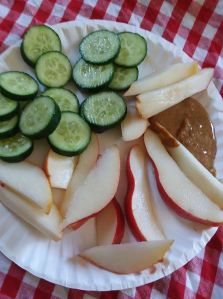 Recently I’ve been eating things like this. The almond butter compliments some fruits and vegetables nicely. And I’ve also been enjoying grapes, honey dew and watermelons, and cantaloupe. Every morning I seem to want an apple.
Recently I’ve been eating things like this. The almond butter compliments some fruits and vegetables nicely. And I’ve also been enjoying grapes, honey dew and watermelons, and cantaloupe. Every morning I seem to want an apple.
I’ve made a few purchases, that I’ll be sharing on the blog, that I bought because I want to try some new things. I’m still waiting on an order from Pampered Chef, and expect it in a few weeks. Let me just say that I am especially excited over the pizza stone! The lady said it will fit nicely in my toaster oven.
 I found this super cute photo of my girls while going through a memory box. They were so little!
I found this super cute photo of my girls while going through a memory box. They were so little!
Here are some recipes from the blog to enjoy during the rest of your summer.
Highlights of my summer include include:
- Video chats with my Littles and their mom.
- Socially distanced pizza lunches out on the gazebo with Skye and Ryan.
- A socially distanced visit with Skye to see my Littles and their dad.
- A trip to Bar Harbor with my sister, and some almond milk ice cream!
- Socially distanced visits with the bestest, and with my parents.
- Two walking goals met!
Still looking forward to:
- A hike with Skye.
- Another walking goal to meet.
What has your summer looked like? Normal? Or a new summer routine?
Have a great summer!
~ Shannon
Quick Tip: What to do with all the Celery
Celery is a nutritious addition to the diet. As well as being used in one-pan-meals, casseroles, and soups, you can do other things with it. Use some of the stalks or the greens in salad or smoothies. Add celery to juice. Snack on it plain. I love mine with nut butter. You can also use it when making vegetable stock.
Celery will store just fine for about a week in the refrigerator, but to extend it’s useful life you can cut it into sticks or shorter stalks and store in a jar of water in the refrigerator.
As for the greens, I just rinse and towel dry them, then place in a freezer container if I won’t use them within a couple of days. They’ll keep for at least a couple of weeks in the freezer. I use these in smoothies. They aren’t even noticeable.
How do you use celery? How do you store it?
~ Shannon
Quick Tip: Drying Herbs
As the weather gets nicer, many people start wondering how they can save money on groceries while eating fresh foods. One thing is for certain, growing your own herbs will mean less money spent, and less money wasted on items you won’t use up before they can go bad. You can pick the herbs fresh, in just the amounts you need.
And when these harvests do need to be cut at the end of their growing seasons, you can hang many of them to dry – and store them for out-of-season use.
I will not pretend to be an expert on drying herbs, though I do so minimally in my own kitchen, but I will share this article from Mother Earth News. It will help.
Of course, you can also dry what herbs you won’t be able to use fresh after buying them as well.
Enjoy!
~ Shannon



